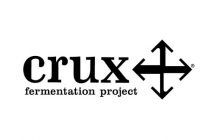Virtualization is a technology that allows the running of a virtual instance of a computer operating system within a layer abstracted from actual hardware. In other words, you take a standard desktop or server and install a third party application that allows you to use guest operating systems that run independently of the hardware.
This allows a single piece of hardware to run numerous operating systems. The benefits of this are flexibility, reliability, agility, and cost effectiveness. Instead of having to purchase a server or desktop for each operating system, you can use one system with enough resources to host numerous guests.
On one piece of hardware you could run any number of Linux distributions to host the likes of web server, database servers, container nodes, LDAP authentication servers, printer servers, as well as a Windows guest.
Enough to say, virtualization is a crucial piece of technology for businesses and developers. But what virtualization solutions are best suited for your company? Let’s take a look at some of the most popular options and why they might work for you.
VirtualBox
VirtualBox is a free, open source solution for virtualization that does an outstanding job of creating guest virtual machines on a host. VirtualBox can run on Linux, Windows, and macOS hosts and supports Linux, UNIX, BSD, Windows, macOS and more guests. VirtualBox has both a GUI manager as well as a command line option.
For anyone new to virtualization, VirtualBox is the ideal solution. The graphical interface is very user-friendly, and creating a guest virtual machine is about as simple as it possibly can. The best fits for VirtualBox would be individual developers or software QA & outsourcing services, small businesses, and those who are looking to test different operating system platforms.
VMware vSphere
VMware is a pioneer in virtualization. It’s been around since 1998 and has acquired one of the finest reputations within the realm of virtualization. One of the products VMware sells is vSphere. VMware vSphere is a suite of tools (which includes the ESXi Hypervisor and the vCenter management software) developed specifically for cloud computing. With vSphere, any business can easily adopt a hybrid cloud with industry-leading software. Such a hybrid cloud would feature data center consolidation and business continuity, enhanced app performance, big data virtualization, containerized application deployments, remote and branch office support, legacy UNIX to virtualized Linux migration, and much more.
The best fit for VMware vSphere are software QA outsourcing companies, medium to enterprise businesses looking to leverage large scale virtualization and a hybrid cloud. Unlike VirtualBox, VMware vSphere does have an associated cost that can be a bit steep for small businesses or new users.
Red Hat Virtualization
Red Hat Virtualization is an open platform that virtualizes both Linux and Windows workloads. RHV is a combination of Red Hat Enterprise Linux (RHEL) and the KVM hypervisor. Red Hat has a long history of simplifying the complex, and Red Hat Virtualization is a perfect example of this.
RHV includes user-friendly, intuitive tools that make setting up your virtualization solution simple—even if you’re migrating from a competing solution. Within the framework of Red Hat Virtualization, you can have your virtual machines up and running in minutes and massive virtual deployments deployed in hours.
And for those who prefer a single point of entry, Red Hat Virtualization includes a management component that assists in the provisioning and managing of virtual machines. The best fit for Red Hat Virtualization would be mid- to large-sized companies who need both Linux and Windows virtualization solutions and already have administrators with knowledge of Red Hat Enterprise Linux. For licensing costs, contact a Red Hat Business partner.
Microsoft Hyper-V
Hyper-V is the Microsoft virtualization solution, which allows you to create and run virtual machines. Hyper-V is fully capable of deploying virtual servers in minutes, can handle live migrations and backups with ease, integrates with Windows Active Directory, can run modern or older versions of Windows as well as other guests, and can run on any hardware that supports Windows Server.
The biggest benefit of Hyper-V over vSphere is that Hyper-V is capable of significant scaling. For example, Hyper-V hosts can work with 24TB of RAM, whereas vSphere maxes out at 16TB. On the contrary, vSphere can handle 4096 virtual CPUs per host, whereas Hyper-V can only handle 2048. As a cluster, both Hyper-V and vSphere are both capable of handling 64 maximum nodes, and a maximum of 8000 VMs per cluster. So if your company is looking for significant scalability, Hyper-V might be your answer.
There is a version of Hyper-V that is free, but for businesses, a Windows Server license will have to first be purchased and the cost is on a per-core basis. So , depending on the scale out, this can get costly. Hyper-V is best suited for companies who already have an investment in Windows Server and Windows Server training, and aren’t afraid of paying the licensing costs for massive scale outs.
There are, of course, even more virtualization solutions than what you’ve read here. But of all the options available, these are not only the more popular solutions, but they are also the easier solutions to deploy.




